Taking A Look Back At Ray Allen's Historic Career

Obsessive. That’s long been the go-to adjective to describe Ray Allen, who officially announced his retirement on Tuesday, more than two years after he played his last game with the 2014 Heat. The future Hall of Famer, two-time champion all-time leading three-point shooter stressed the importance of his “Boring old habits” in a letter announcing his decision posted on The Players’ Tribune.
Obsessive attention to his shooting mechanics and warm-up routine. Obsessive attention to his physique. Obsessive attention on his internal motivation, eschewing naysayers and yaysayers, alike.
“You’ll win a championship in Boston,” Allen writes. “You’ll win another in Miami. The personalities on those two teams will be different, but both teams will have the same thing in common: habits. Boring old habits. I know you want me to let you in on some big secret to success in the NBA. The secret is there is no secret. It’s just boring old habits.”
Ray Allen officially announces retirement after two years away from NBA
Allen’s singlemindedness and commitment produced a career so long and distinguished that it can be broken into eras. He was Jesus Shuttlesworth in 1998’s “He Got Game” and he was “Mr. Yellow Ropes” during the historic 2013 Finals. Along the way, he plied his trade for the Bucks, SuperSonics, Celtics and Heat, piling up 10 All-Star and two All-NBA selections and cultivating the league’s most envied shot.
“The greatest shooter to play the game,” Stephen Curry wrote on Twitter Tuesday, the ultimate compliment from the ultimate authority on the subject.
In recognition of Allen’s formal announcement, which comes after two seasons worth of rumors about a return to the court, here’s a look back at his sterling 18-year career through the lens of the Sports Illustrated Vault.
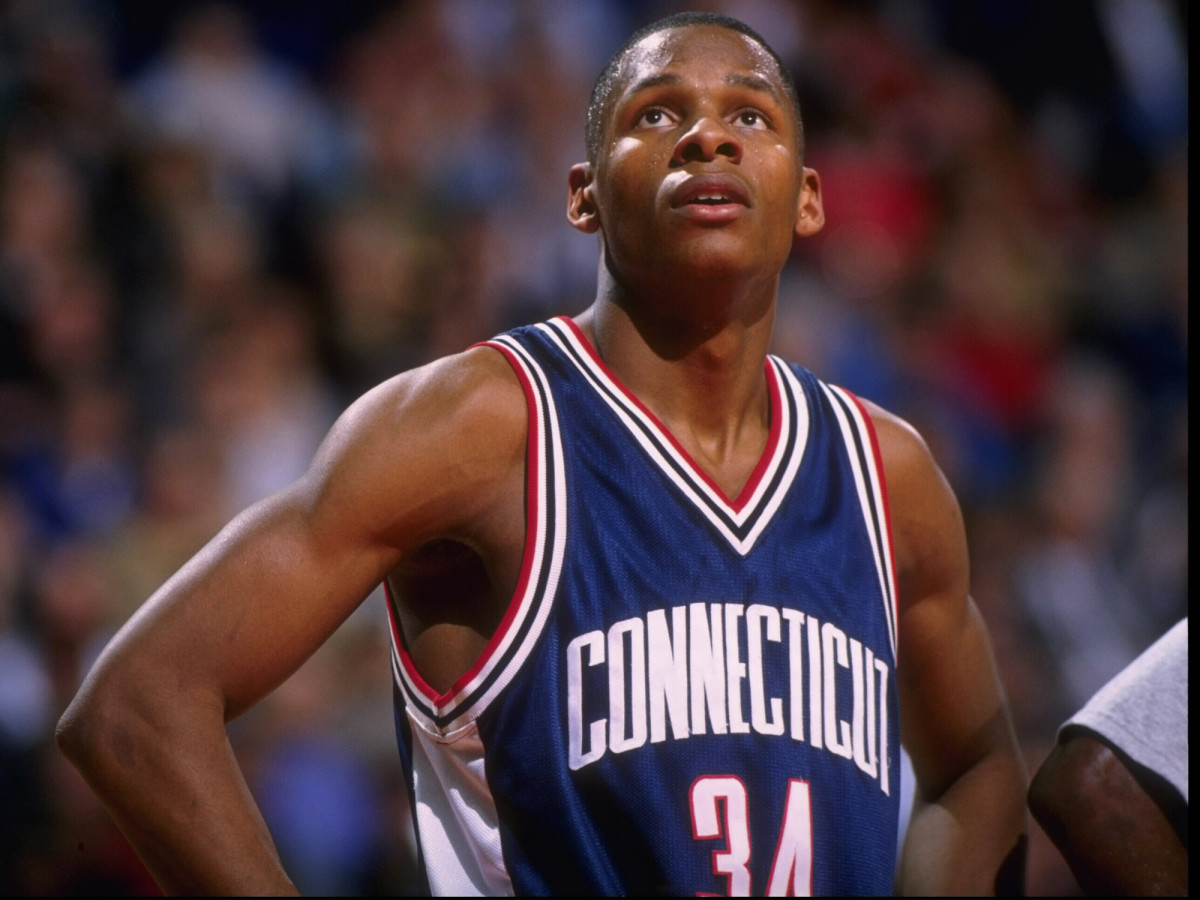
UCONN
Allen first arrived in the pages of Sports Illustrated with a whisper rather than a bang, garnering a quick mention in a Big East preview that devoted more ink to Allen Iverson. Midway through his sophomore season at UConn, SI hailed him as an “emerging superstar” and forecast his NBA ceiling. By Jan. 1996, Allen’s junior year, Jack McCallum suggested he had top-five potential in the upcoming draft while evoking a particularly lofty comparison.
“Allen’s classic jump shot and smooth, economical moves suggest Michael Jordan.”
Then, in March, Alexander Wolff offered this extended profile, which, not surprisingly, quotes Allen on the virtue of “control."
UConn coach Jim Calhoun intends no disrespect when he points this out, but he says, “Iverson makes it look difficult. Ray makes it look easy.”
“Control is basically the whole agenda of my life,” says Allen, a 6’5” junior swingman. “To take charge of everything and make decisions for myself.” As he goes up for one of his jumpers, a shot so reliable that he was making 47.4% of his three-pointers at week's end, Allen is compact, in control. He plays defense with the relentlessness of a spurned long-distance company that wants you back, but always... in control. When he curls off a screen and takes a pass from his usual setup man, Huskies guard Doron Sheffer, and slashes his way to the basket, it's the same thing. "He's committed one charge all year," says Calhoun. "For a guy who's averaging 23 points a game, that's remarkable." Indeed, Allen may sometimes be too controlled for the Huskies' own good; Calhoun frets that Allen is so adept at altering his flight path with midcourse corrections that he often avoids contact altogether, thus losing out on a trip to the foul line
Afterward Allen explained why the Huskies hadn't been more demonstrative after clinching their third straight regular-season Big East title. "Last year we had guys who drank a lot of coffee," he said. "[Former Huskies] Bu Willingham and Donny Marshall, they were all hyped up."
Someone suggested that Allen was a decaf guy. "No," replied this most fluid of players. "I'd say I'm just water."
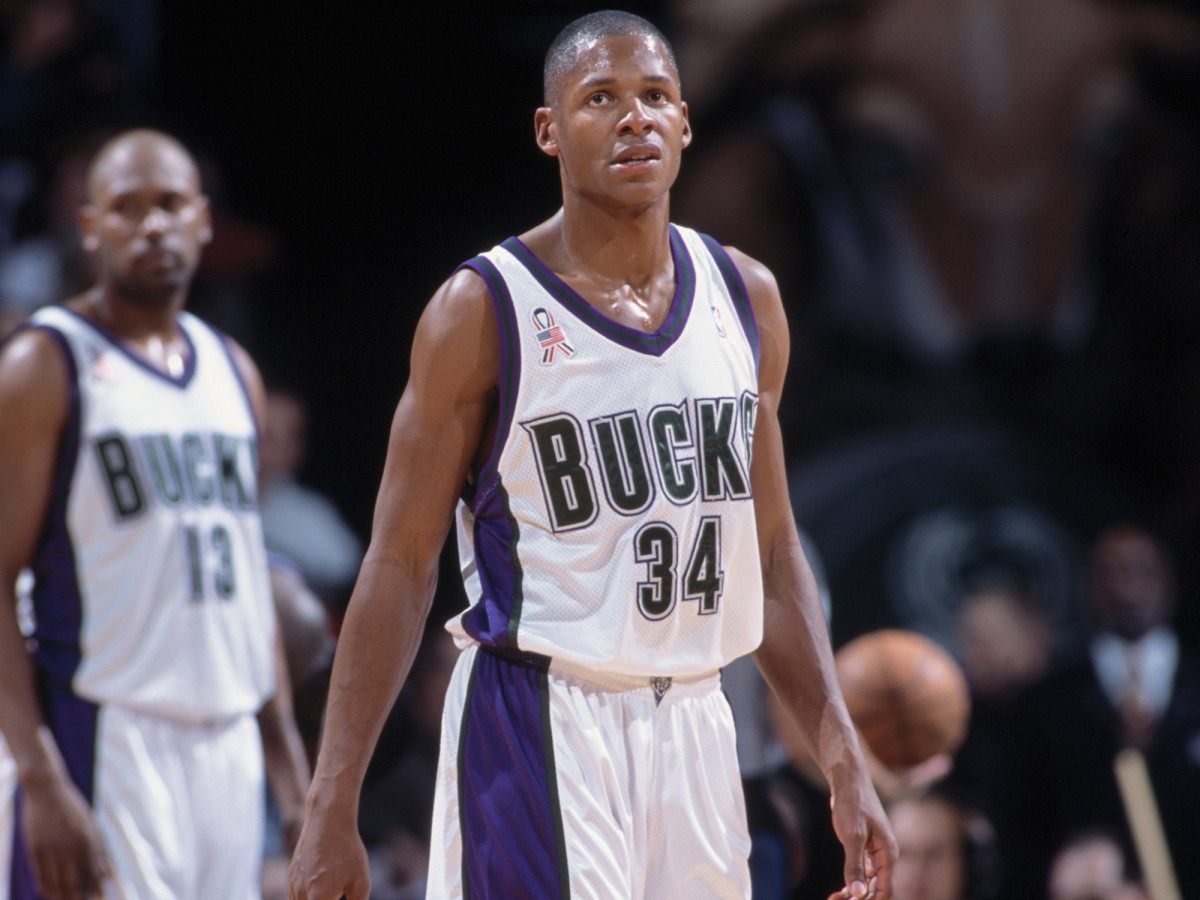
Milwaukee
As expected, Allen was a top-five pick in the loaded 1996 Draft, taken four spots behind Iverson and eight spots ahead of Kobe Bryant. Although he was selected by the Timberwolves, Allen was quickly shipped to the Bucks for the rights to Stephon Marbury.
By the time his rookie year rolled around, he sounded like a man with no regrets about skipping his senior season at UConn.
"You have to look at both sides," says Ray Allen, who left the University of Connecticut after his junior season and was the fifth player taken in the '96 draft. "Where would I rather be? In the NBA, making money, with no rules, a job and any car I want? Or in college, where I've got to wake up early and go to class and have no money in my pocket?"
Although Milwaukee missed the playoffs his first two seasons, Allen was making a name for himself, cracking the 20-PPG threshold in year four and catching Jordan’s eye in 1998.
[Jordan] even handpicked [Michael] Finley to be one of five players, along with Milwaukee Bucks guard Ray Allen, Cavaliers guard Derek Anderson, Seattle SuperSonics forward Vin Baker and Los Angeles Lakers guard Eddie Jones, to be official endorsers of his new line of apparel.
Breaking The Bank: Ranking Early Extensions For The 2013 NBA Draft Class
Teamed with Sam Cassell and Glenn Robinson, Allen earned his first All-Star nod in 2000, months after coach George Karl urged him to fill out his game.
Grunfeld thinks that the pair is the best shooting guard-small forward combination in the Eastern Conference, and he might be right. But, says Karl, "[Allen and Robinson] have got to forget about numbers and think about doing the dirty work, playing some defense and showing leadership. They've got to become all-around basketball players. The next step is going to come in a playoff series when they lead us to a great win."
By 2001, Allen has the Bucks within one game of the Finals, scoring 41 points in a Game 6 win over Iverson's Siers and adding 26 points in a Game 7 loss. Shortly before that run, L. Jon Wertheim cast Allen as a reason for disenchanted basketball fans to fall back in love with the NBA.
If you can't relate to him, it's hopeless. You'll never love this game again. For starters, just look at him. He's an unimposing 6'5" and 205 pounds with none of those totems that so many of you find so off-putting: no tattoos, no cornrows, none of that anvil-sized jewelry. He's strikingly handsome, he has a million-dollar smile, and with no slang in his lexicon, he speaks in the soothing voice of a pilot pointing out sites of interest below. The worst curse word you'll hear him use is durn, which he picked up only since moving to the Midwest five years ago.
You like golf? Allen has a 10 handicap and will gladly tick off his favorite courses across the country. Want to talk art? Funny, Allen does too. He counts among his legion of friends Milwaukee gallery owner Michael Lord, who has lent Allen works by Miro and Chagall and recently sold him a Warhol lithograph. Last weekend Allen had a wooden sculpture delivered to his sprawling home in suburban Mequon, Wis., to see if it "resonated" (his word) with him. He plays the piano, just finished reading Chicken Soup for the Soul and gets gooey when he talks about his eight-year-old daughter, Tierra, who lives with her mother in Connecticut.
Rare Photos of Ray Allen
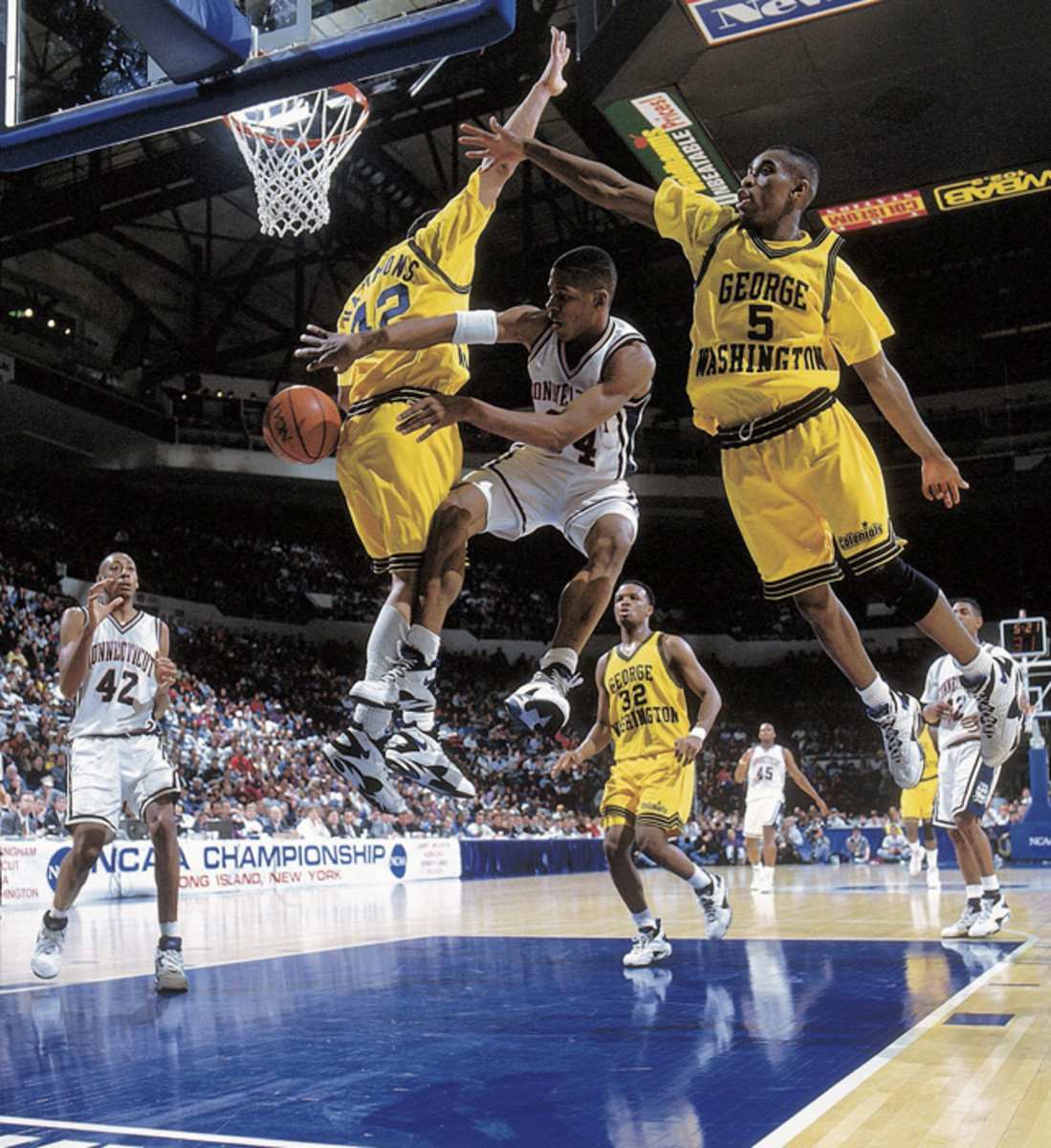
Ray Allen broke Reggie Miller's career record of 2,560 three-pointers against the Lakers on Thursday. Here are some rare photos of the Celtics' sharpshooter. As a military child, Allen spent time in California, England and eventually South Carolina, where he blossomed into a basketball star. He spent three years at UConn and earned first-team All-America honors in 1996. Not surprisingly, he set the school's career mark for three-pointers made (115).
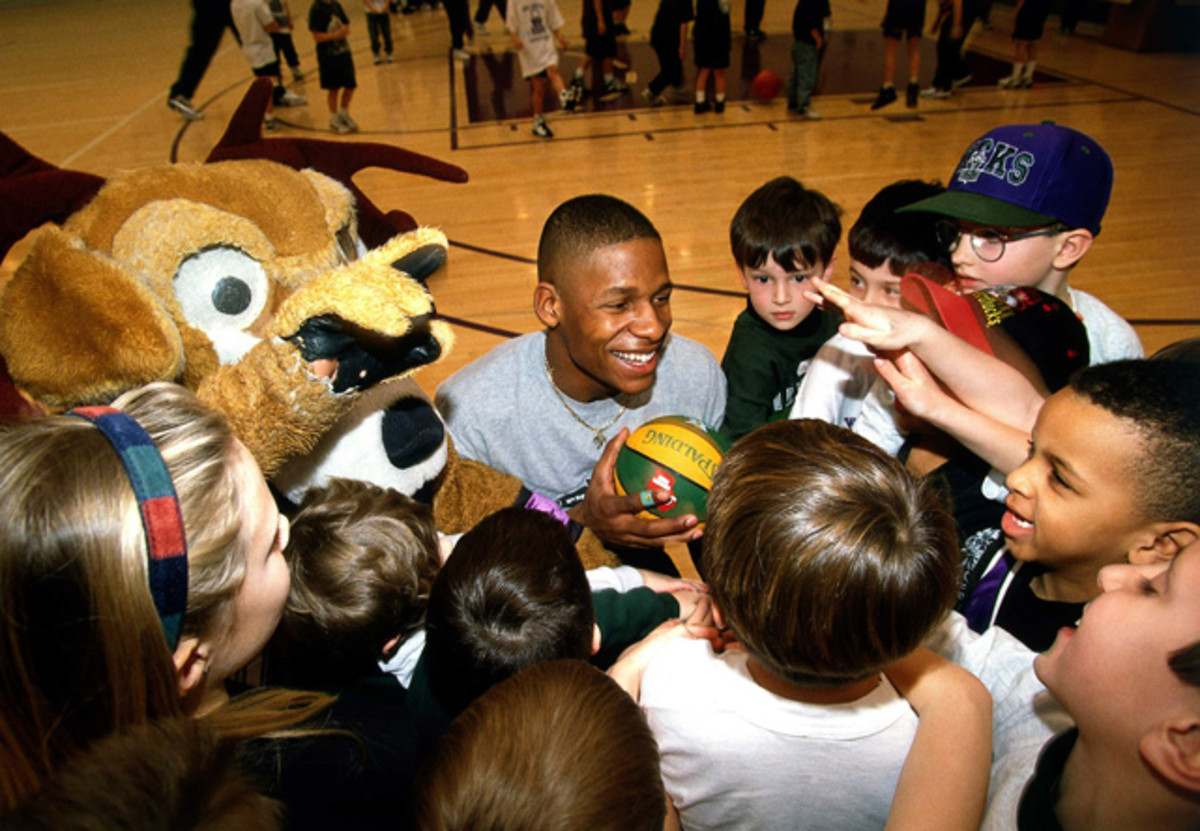
Allen was drafted fifth overall by Minnesota in 1996 and was promptly traded to the Bucks along with Andrew Lang for Stephon Marbury. In this photo, Allen is seen spending quality time with a group of young Bucks fans.
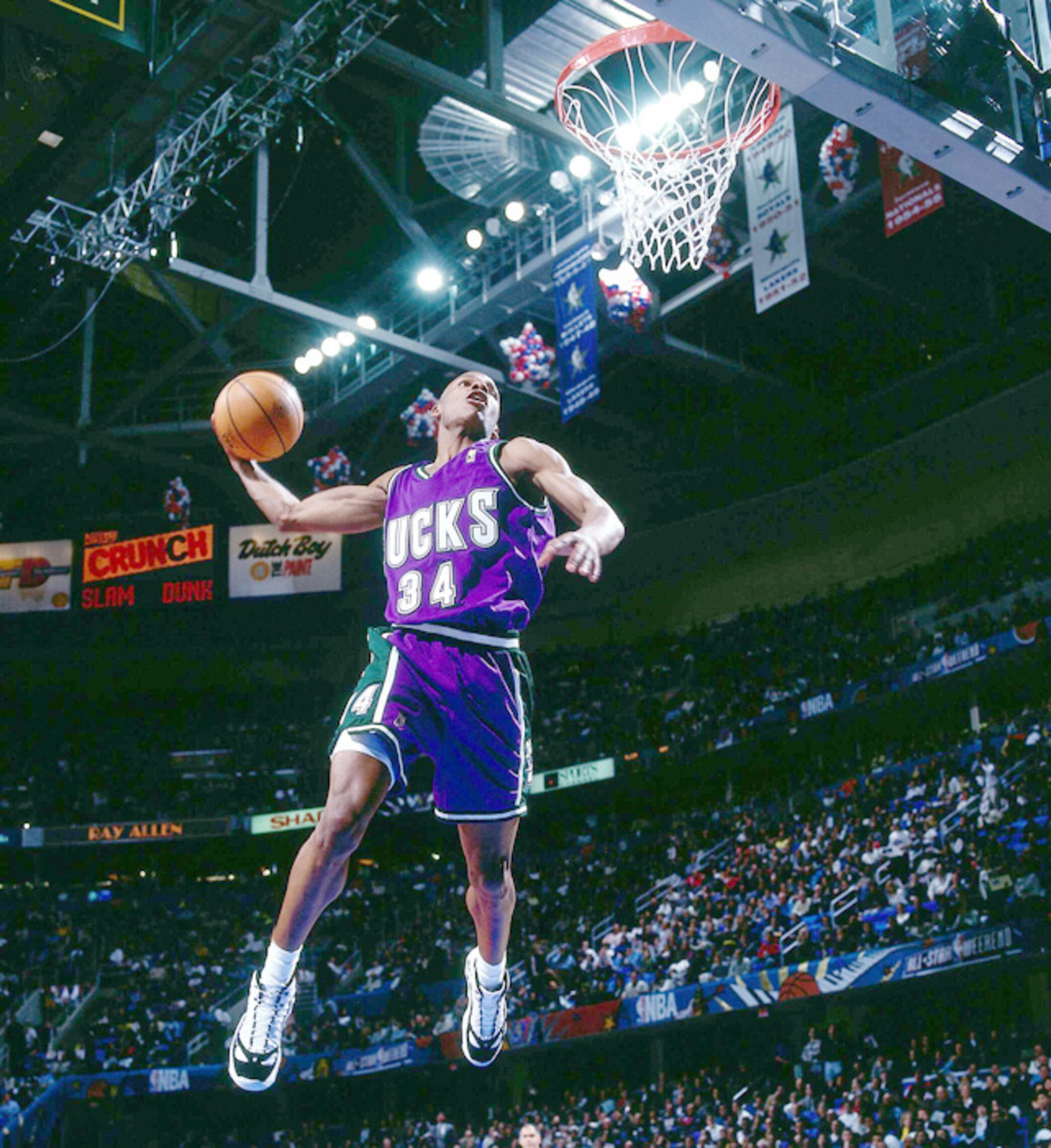
These days Allen is known more for his shooting touch than his dunking prowess, but in 1997 he took part in the Slam Dunk Contest and finished fifth out of six.
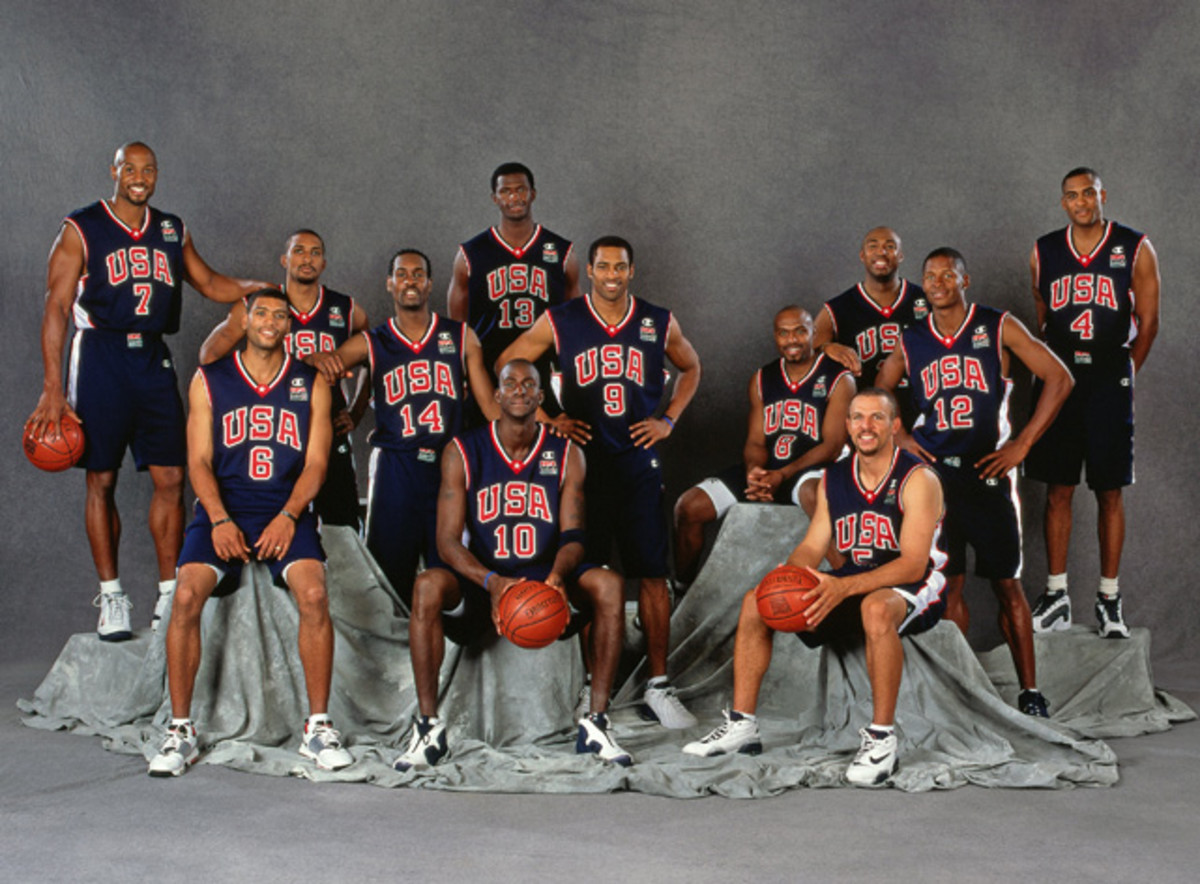
Allen was a part of Team USA at the 2000 Summer Olympics in Australia, which went undefeated on its way to a gold medal.
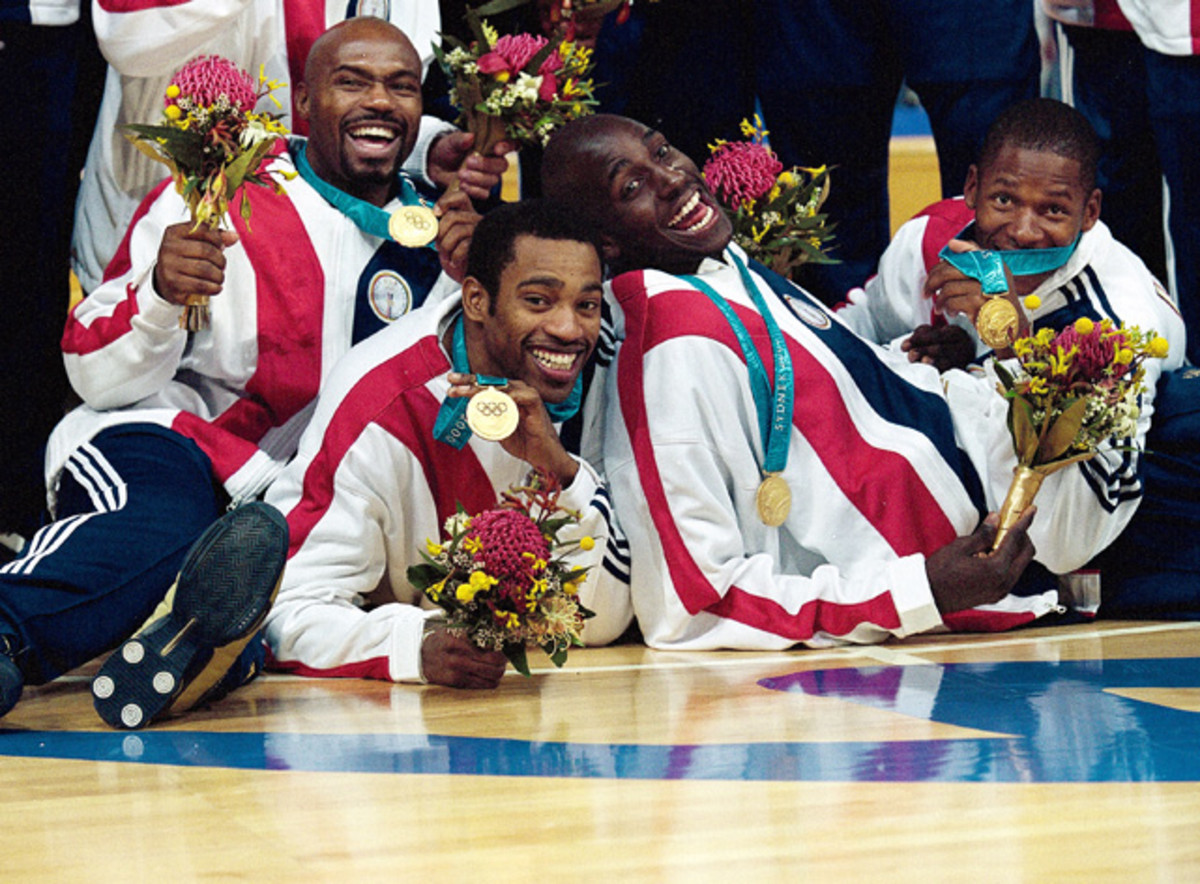
Allen, along with teammates Tim Hardaway, Vince Carter and Kevin Garnett, shows off his gold medal.
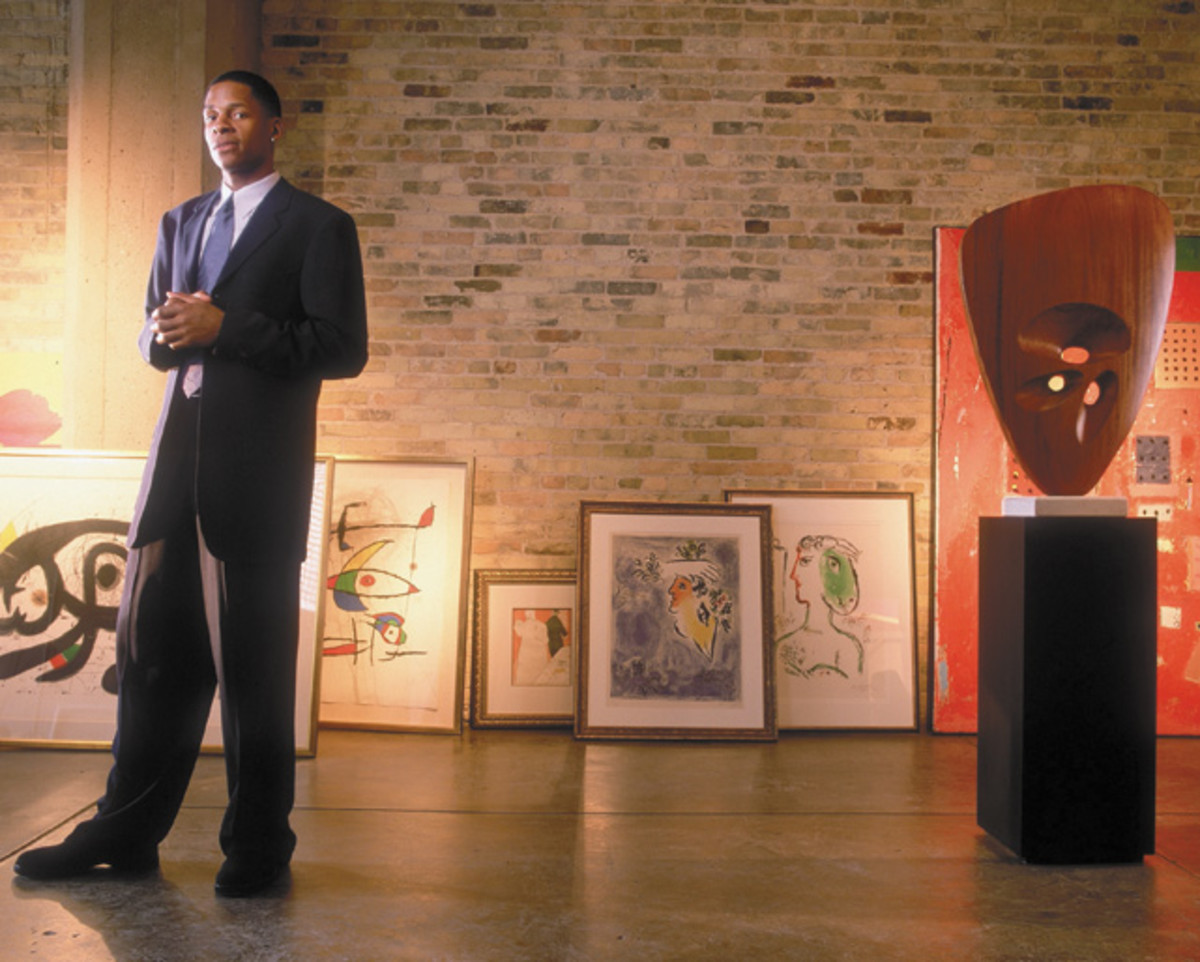
Allen visits the Michael Lord Gallery in Milwaukee during an SI photo shoot.
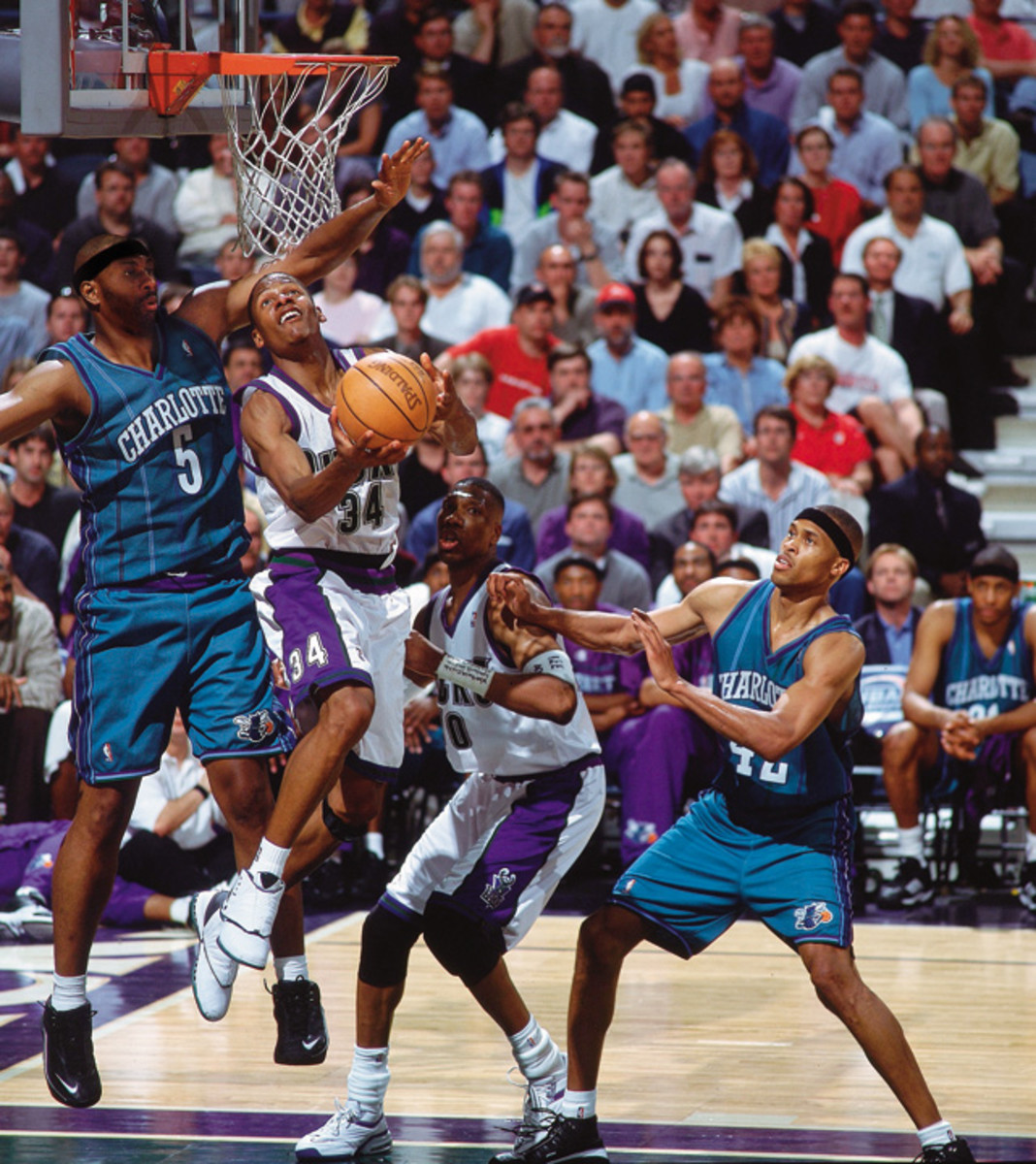
Allen was a consistent inside-outside threat for the Bucks from 1996-2003. In the 2000-2001 season, Allen, along with his first "Big Three" teammates Sam Cassel and Glenn Robinson, advanced to the Eastern Conference Finals.
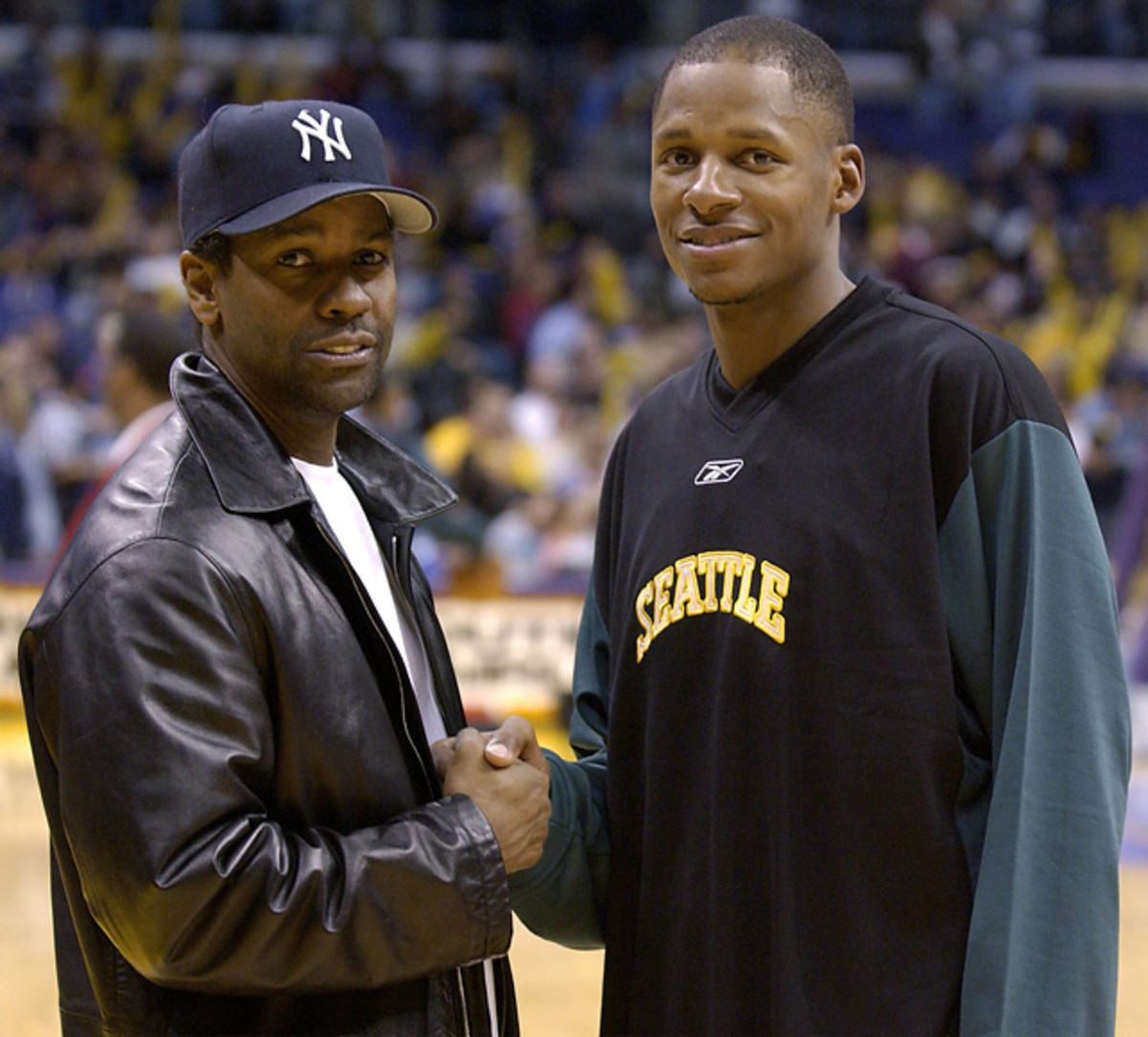
Allen poses with actor Denzel Washington before a game against the Lakers in Los Angeles. Allen co-stared with Washington in the 1998 Spike Lee film He Got Game .
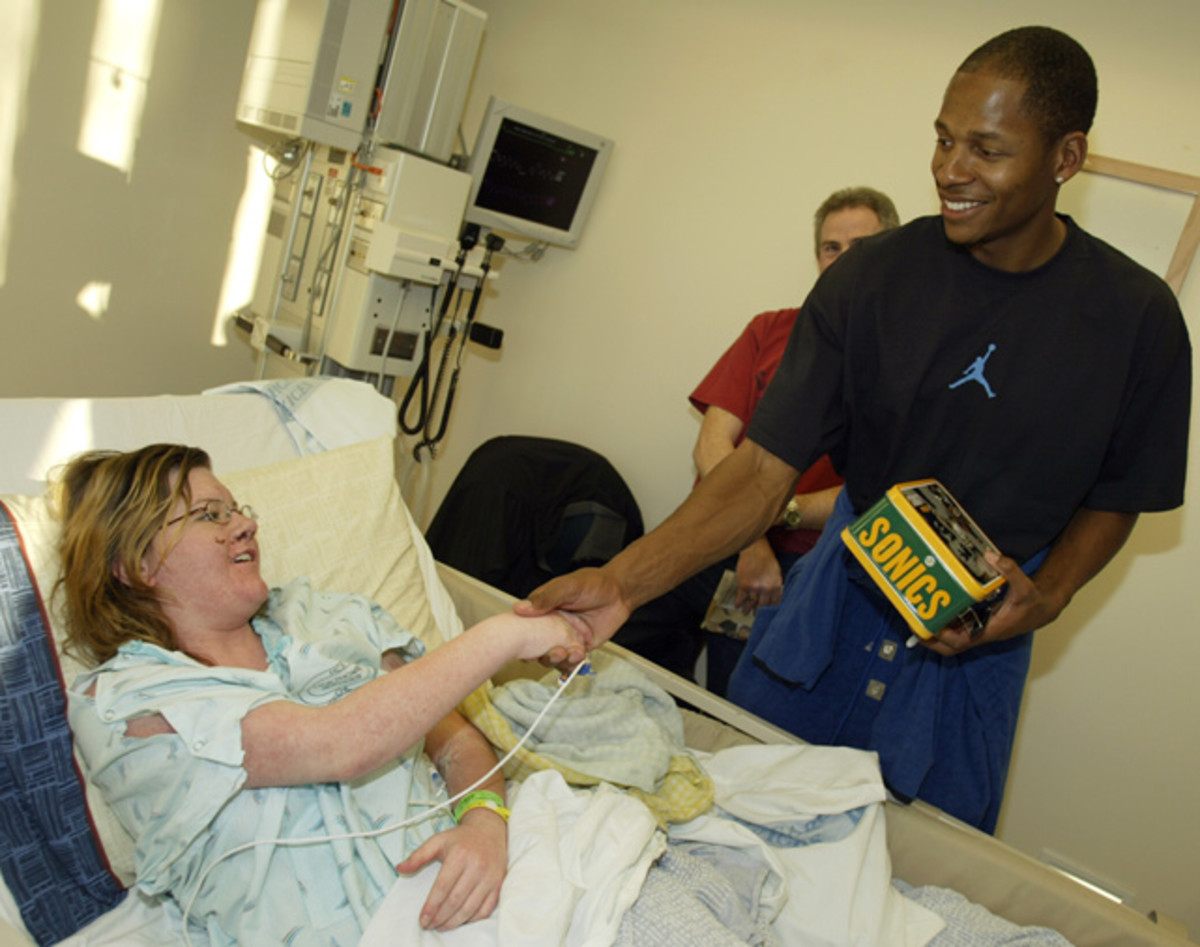
Allen pays a visit to a young patient at the Children's Hospital on Dec. 18, 2003, in Seattle.
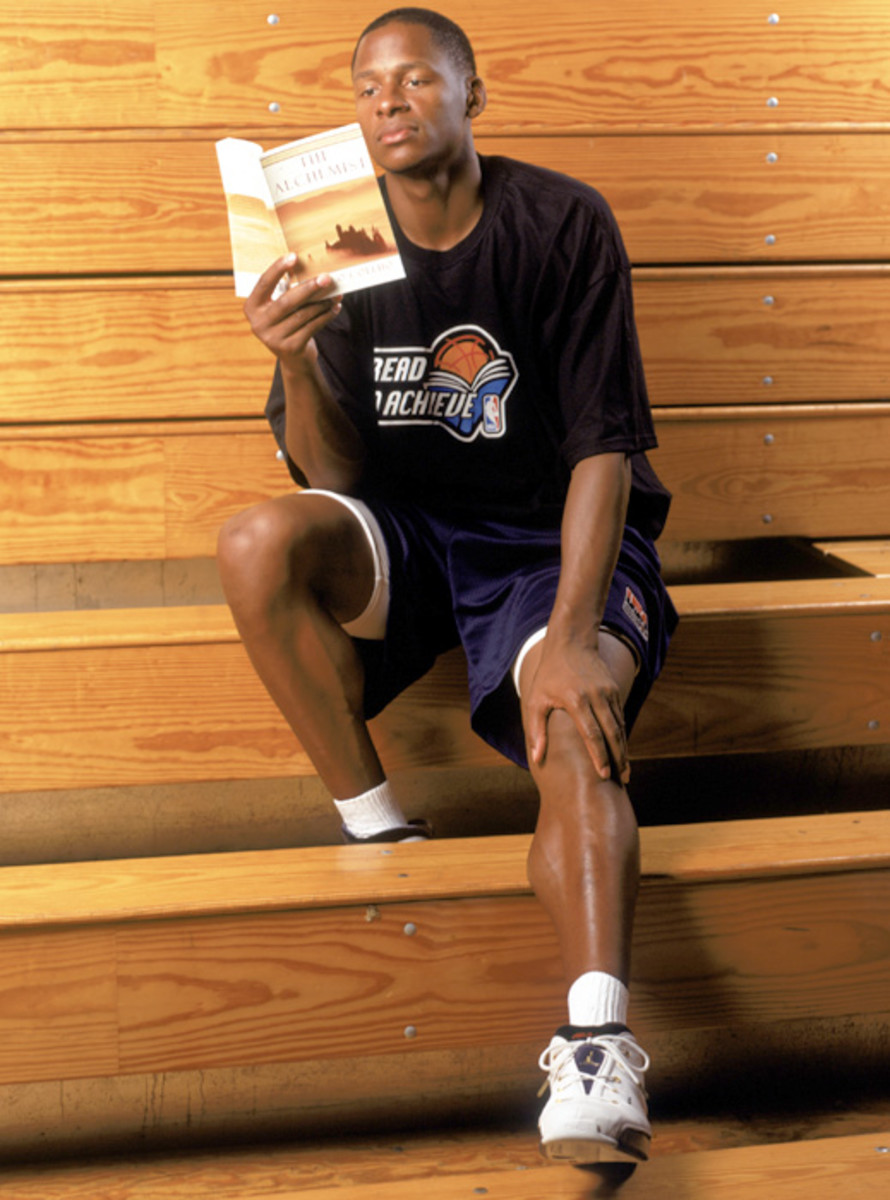
Allen, who dedicates time to the NBA's Read To Achieve Program, relaxes with a book.
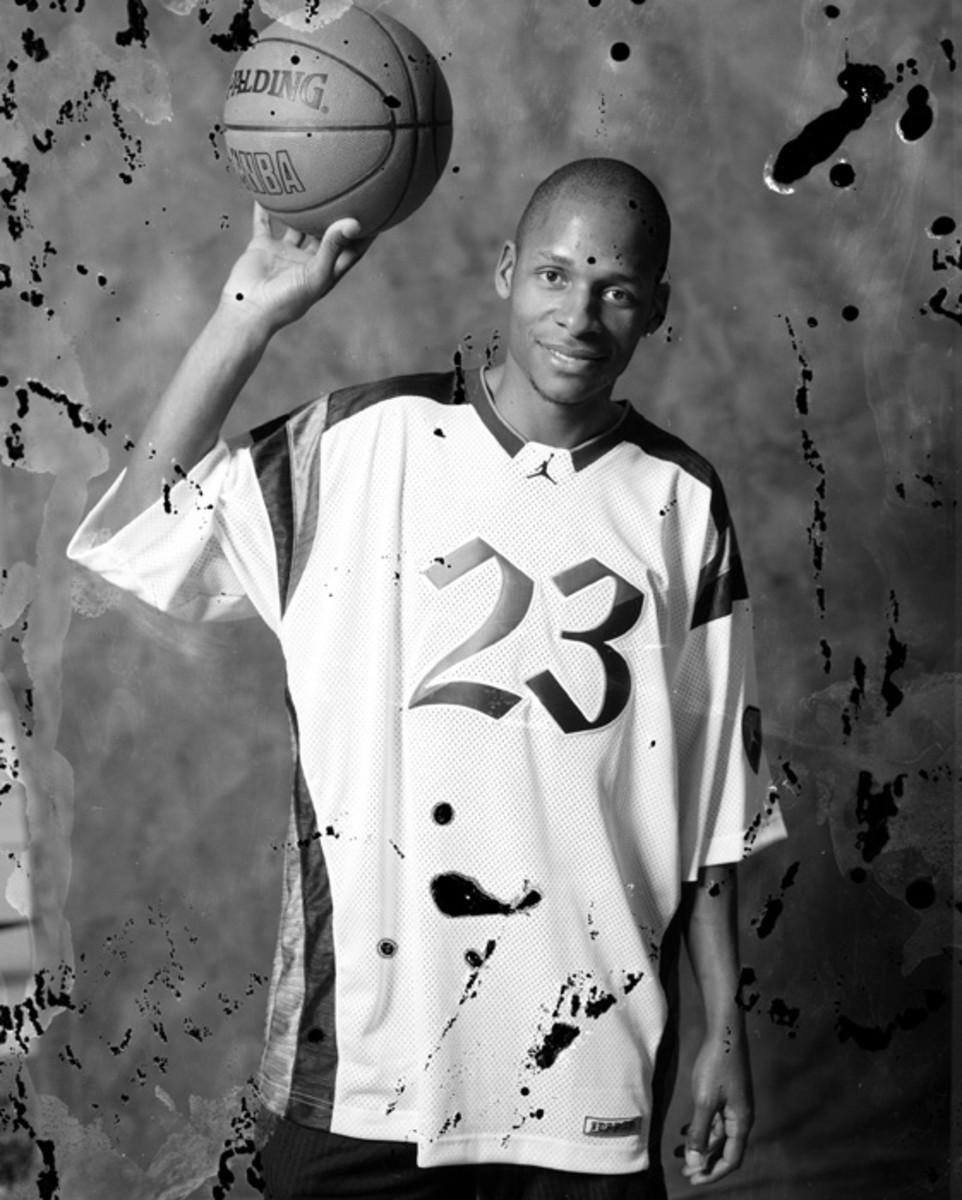
Allen dons a Nike Air Jordan shirt for a photo shoot.
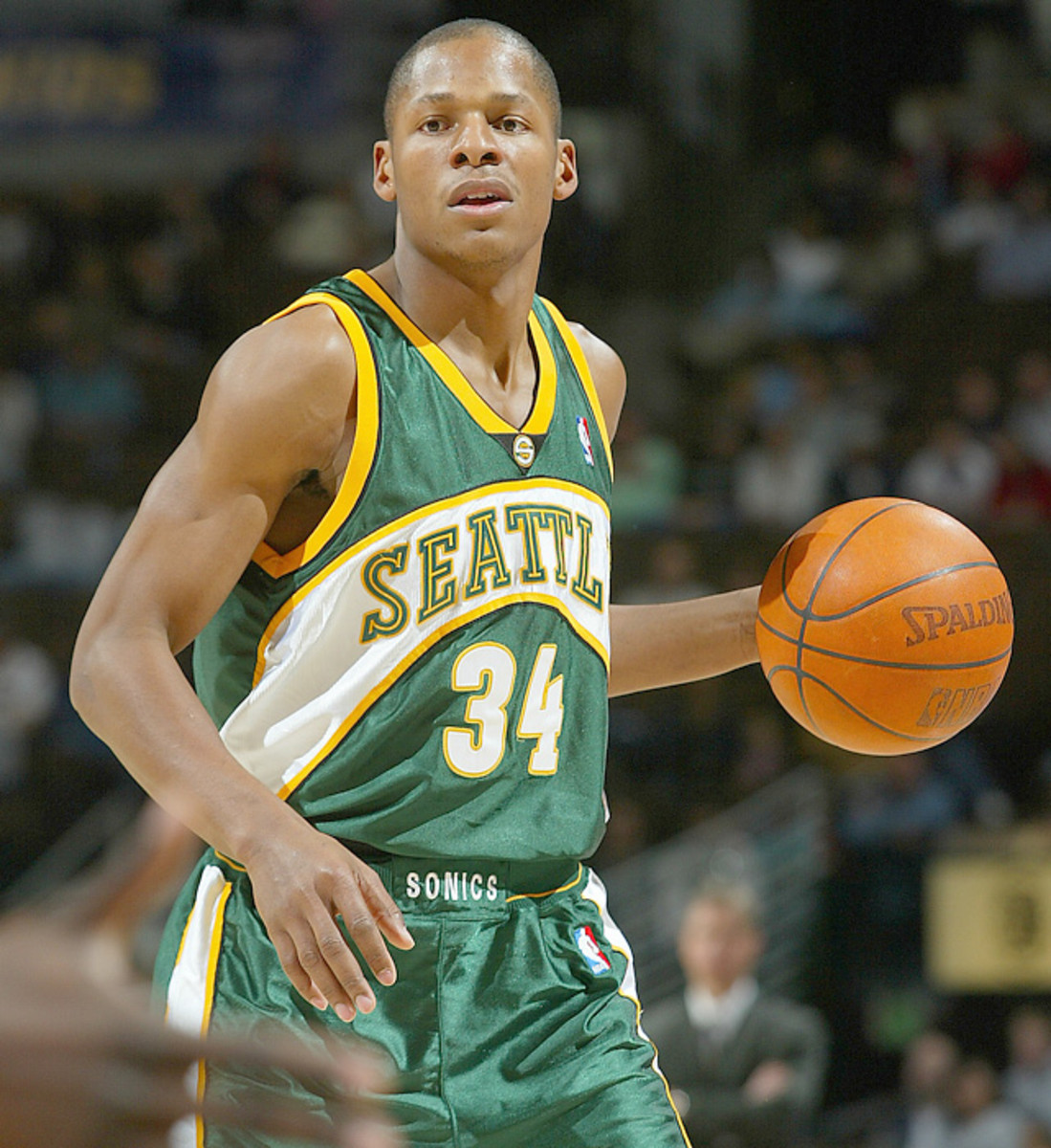
In early 2003, Allen was dealt to Seattle (along with Ronald Murray and Kevin Ollie) for Gary Payton and Desmond Mason. He made the All-NBA second team in 2005 and led the Sonics to the conference championship and 52 wins. In the 2005-06 season, Allen set a career-high with 269 three-pointers made in only 78 games played.
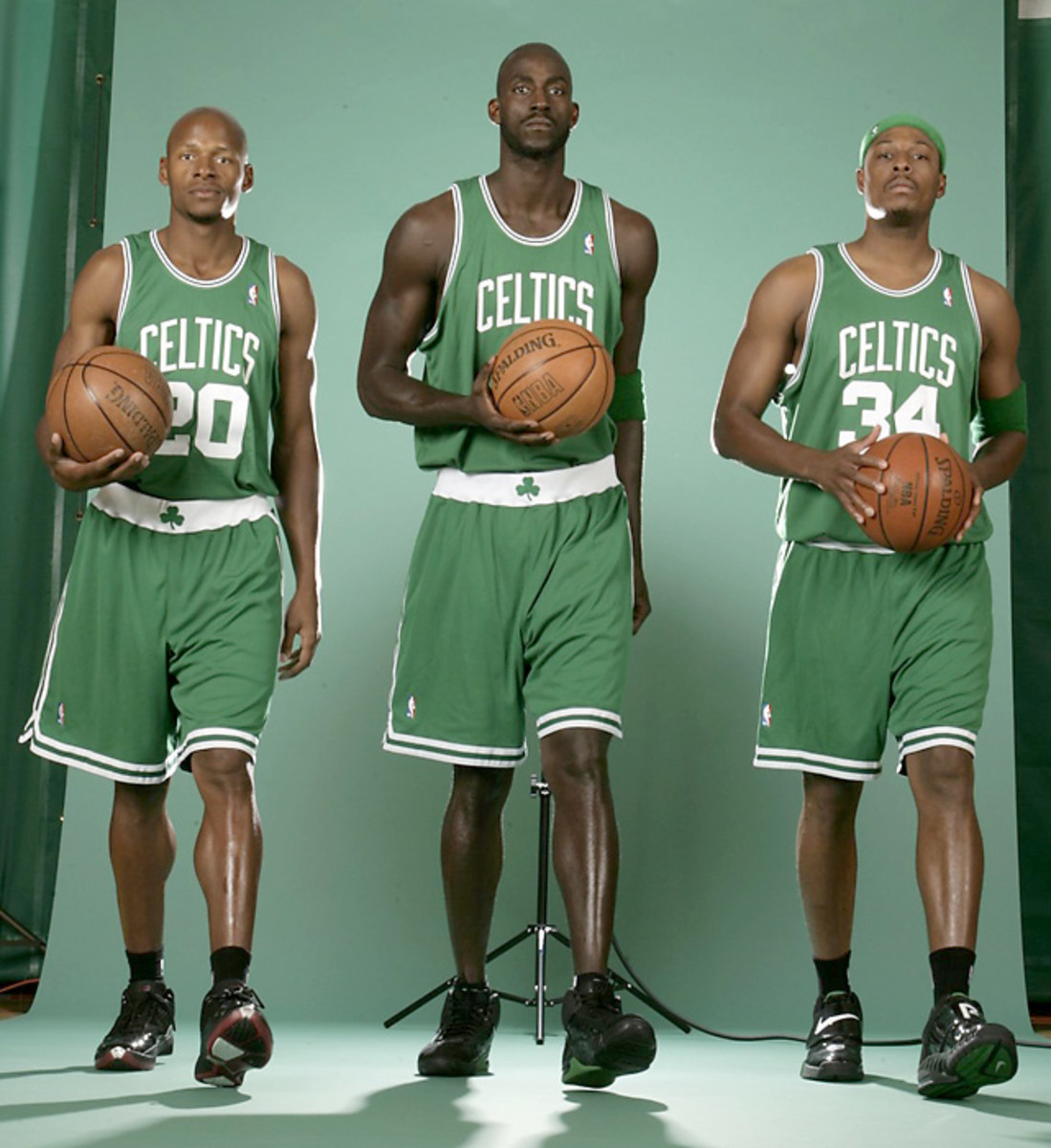
After four-and-a-half seasons in Seattle, Allen was shipped to the Celtics on the night of the 2007 NBA Draft. A month later, Boston acquired Kevin Garnett. They teamed with Paul Pierce to form a new Big Three.
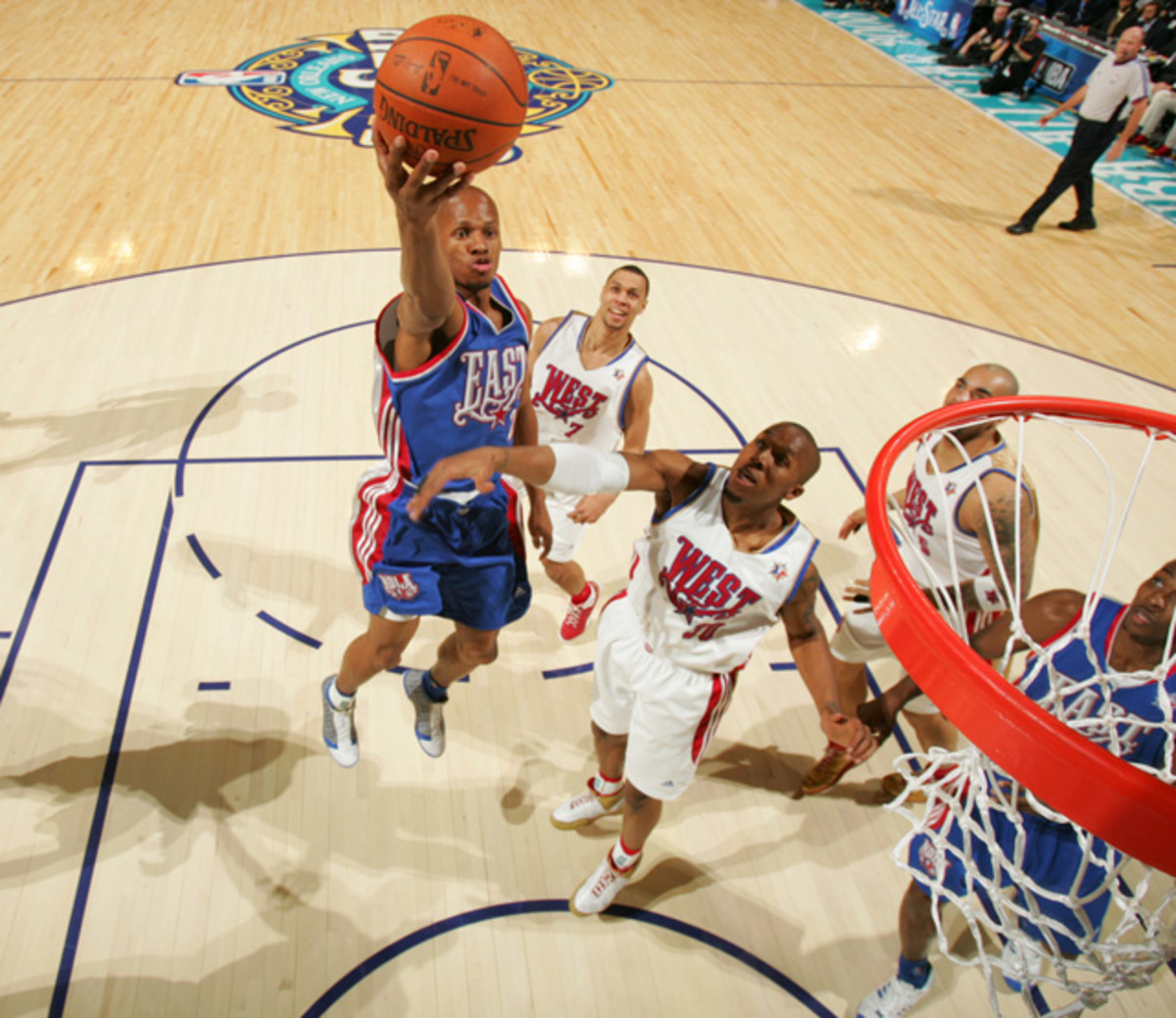
The Celtics came out strong from the gate and the new Big Three all made the All-Star team. In his career, the Celtics' sharpshooter has been selected to 10 All-Star games and won the Three-Point Shootout in 2001.
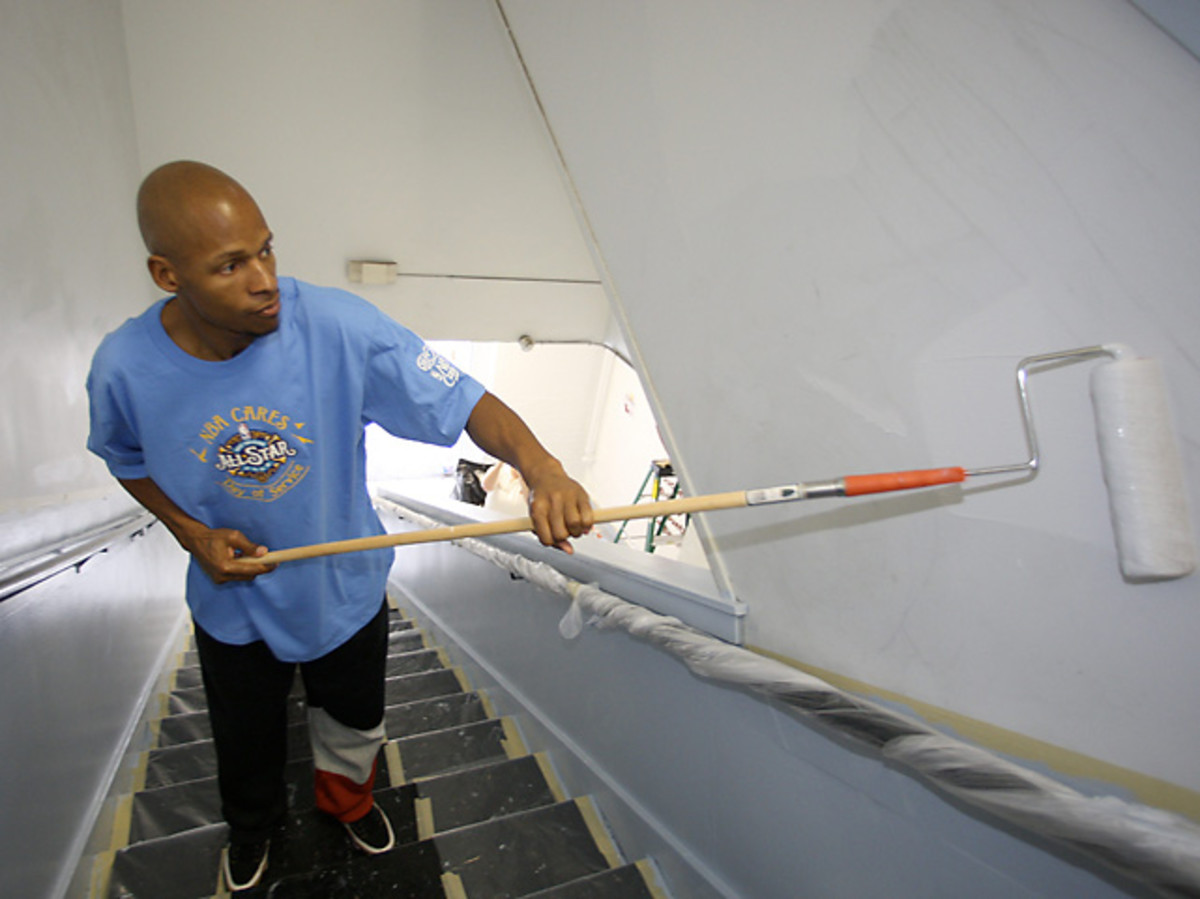
Allen applies paint to the walls of Laurel Elementary School during the Day of Service during All-Star Weekend in New Orleans. Allen has been an active member of the community during his career; he started the "Ray of Hope" Foundation in 1997 to aid a number of sports-related and community-based charities.
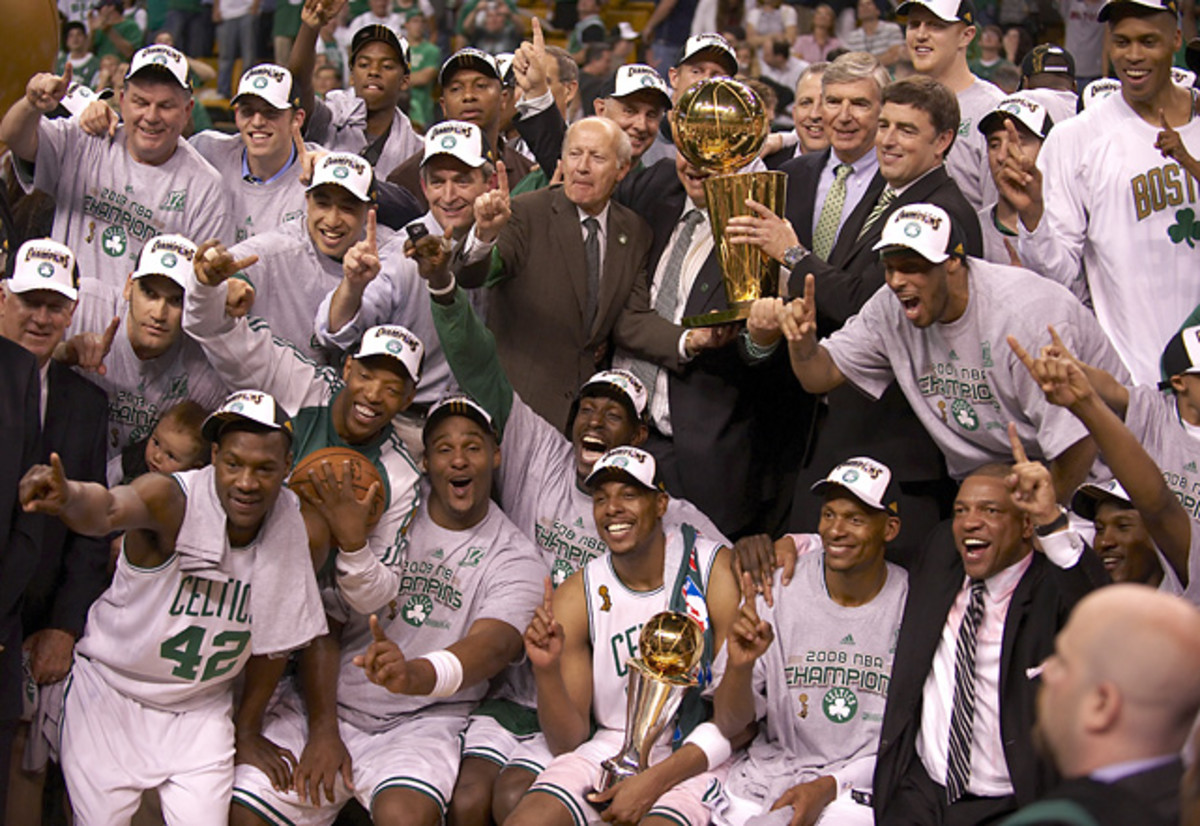
After waiting 13 seasons, Allen won his first championship in his first season with the Celtics. In the '08 playoffs, Allen averaged 15.6 points per game and shot 39.6% from behind the arc.
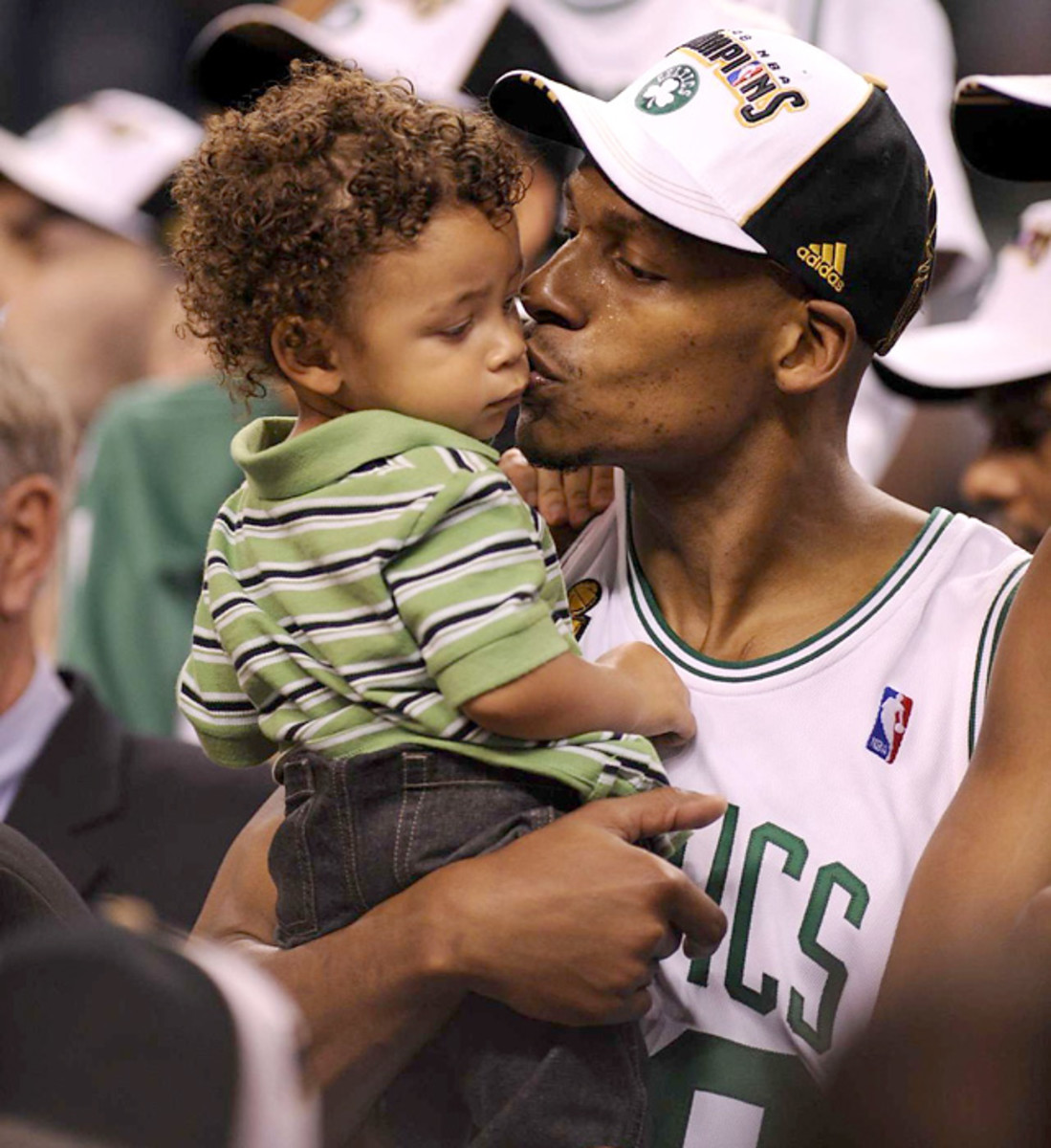
Allen and his wife, Sharon Walker Williams, have two sons, Walker and Ray III. Here, Allen is seen with his then 17-month-old son Walker, who had been diagnosed with Diabetes.
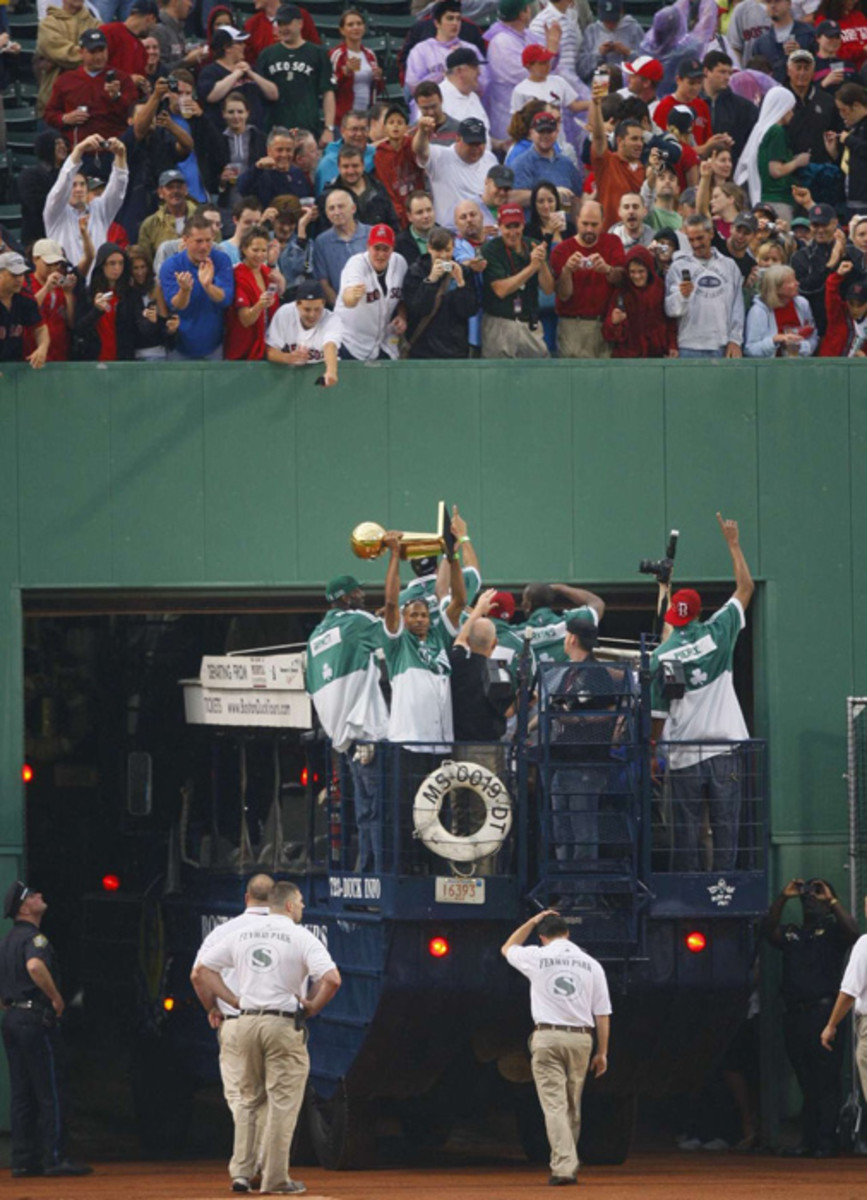
Allen proudly display's the NBA Championship trophy as he and the Celtics are honored by Boston Red Sox fans at Fenway Park.
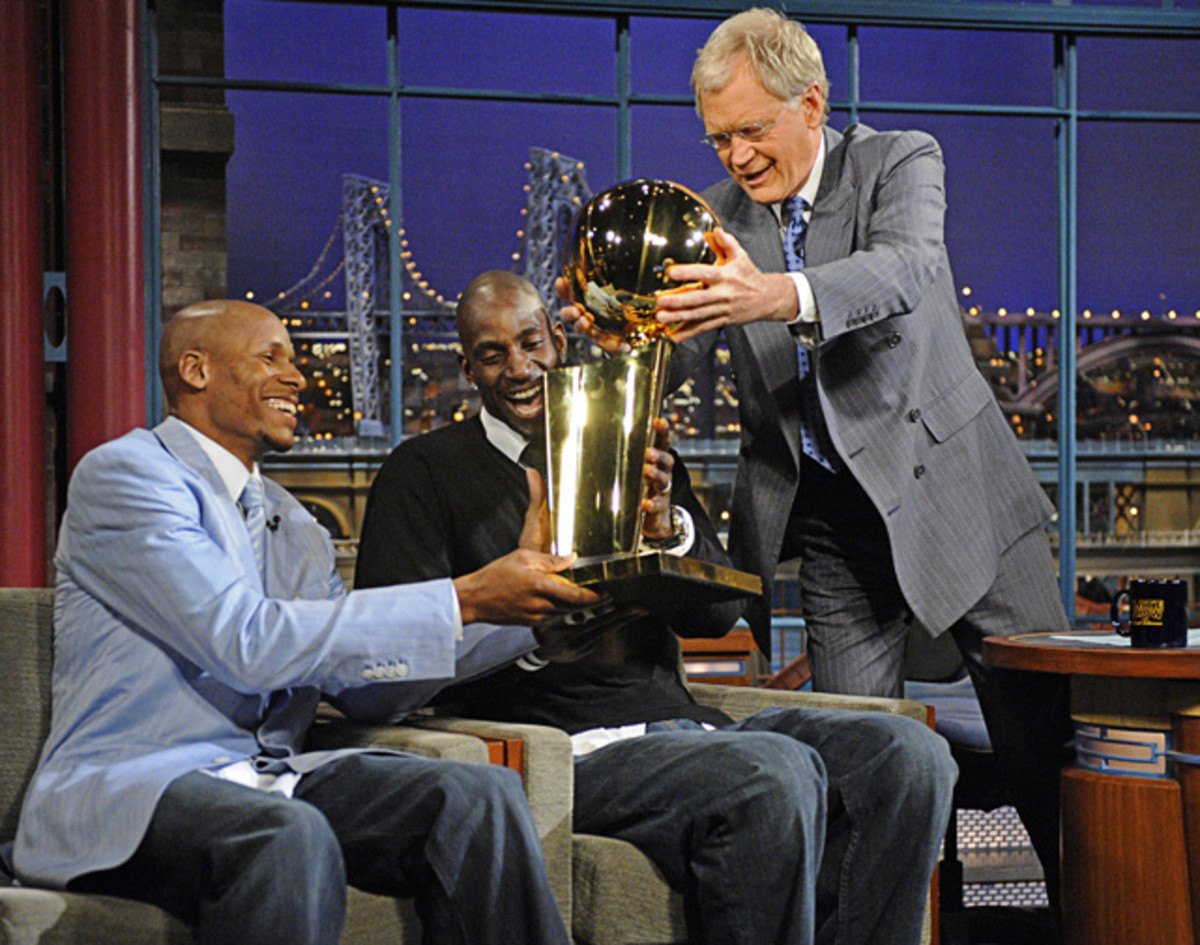
Allen and Garnett show off the Larry O'Brien Trophy to David Letterman.
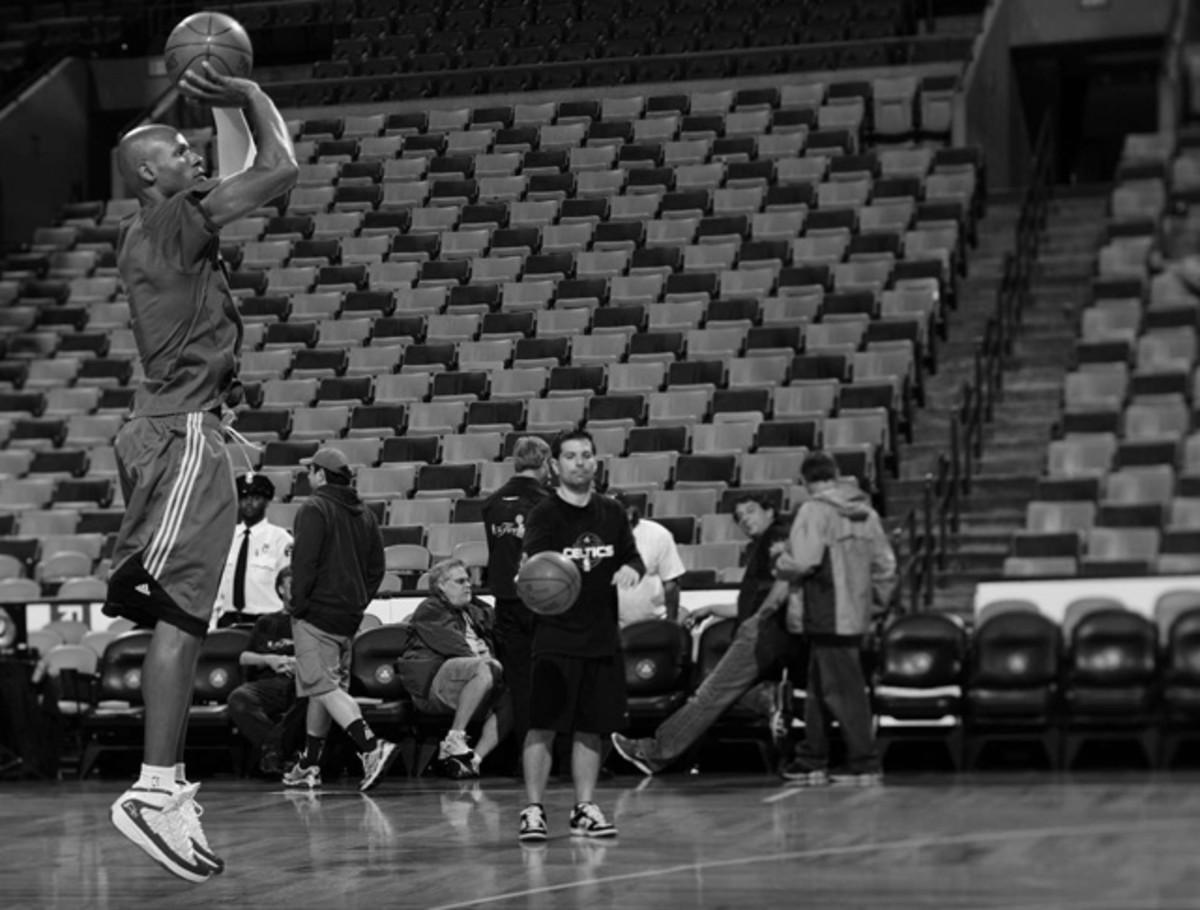
Allen, renowned for being one of the first players on the court to begin warming up for games, takes a practice three-pointer before Game 5 of the 2010 NBA Finals.
With a blinding first step and hops worthy of Milwaukee's finest brewery, he's among the league's most explosive players. His skill at dropping in floaters and finger rolls makes him more dangerous still. Give him a step and, with the most elegant of strokes, he'll bury a medium-range jumper. Give him two steps and he'll hit the three-pointer, as he did on All-Star weekend when he sank 33 of 50 attempts to win the Long Distance Shootout. "Ray's got that smooth flow," says Bucks forward Glenn Robinson, a fellow All-Star. "He's the most natural player I've played with."
"I feel like I can go anywhere, which gives me total confidence," he says. "I can take it to the streets, or I can take it to the boardroom. The trick is to allow people to feel they can relate to you. The more people--white, black, young, old--who can say, 'I know where he's coming from,' the more successful you'll be."
This prompts an obvious question: Why is Allen still on the B-list of NBA stars? A player this well-rounded and with this much charisma ought to be on the front lines of the league's marketing offensive, scooping up endorsements by the handful. Yet Allen is as recognized for his role as hoops prodigy Jesus Shuttlesworth in the 1998 Spike Lee flick He Got Game as he is for any of his noncelluloid basketball feats. Allen doesn't mind at all: He's well-enough known that he has an endorsement deal with Nike and is a bona fide All-Star, but he relishes walking into a Blockbuster or going bowling--now hooked on the local passion, he claims to have a 180 average--without being accosted. Still, at a time when the league is desperate for a transfusion of new blood, Allen's failure to make a more serious dent in the public consciousness is perplexing.
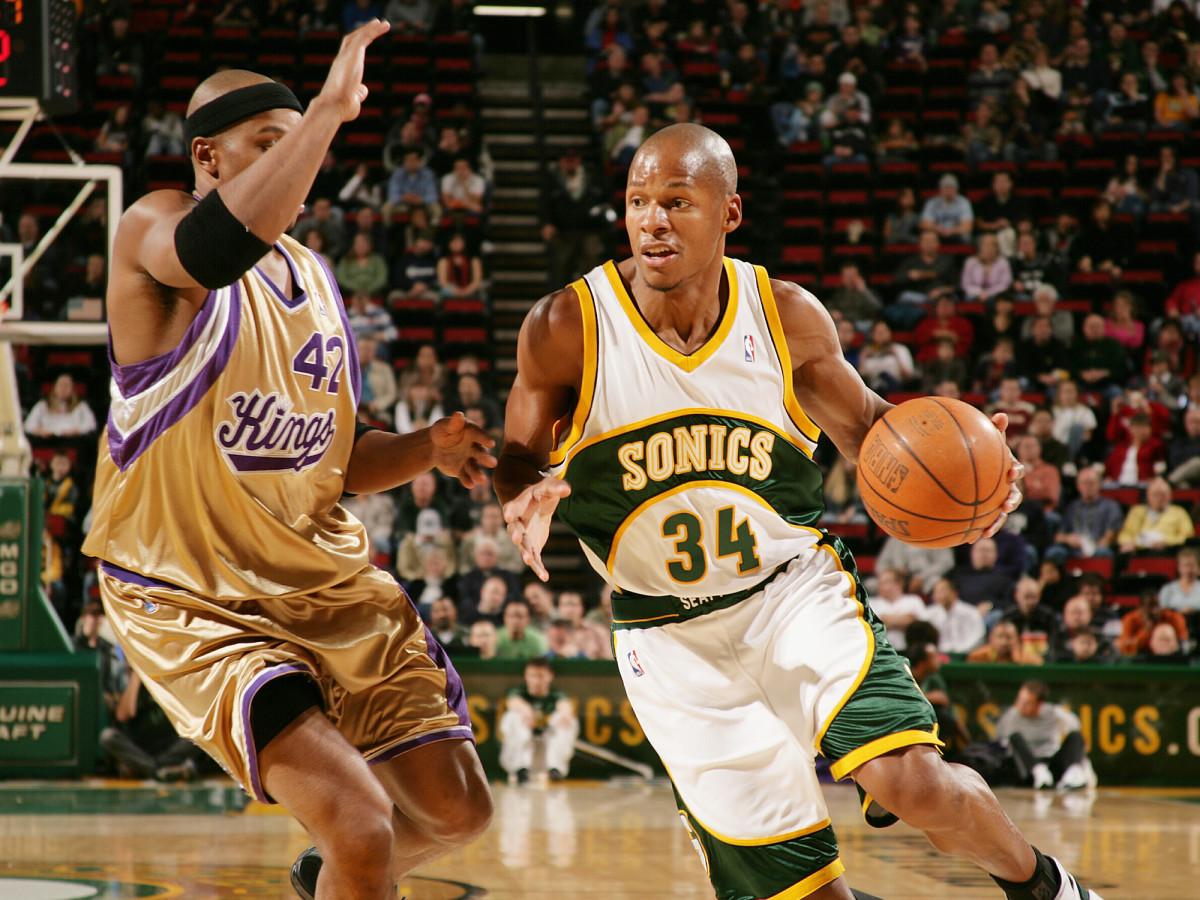
Seattle
Allen -- who admitted in 2001 that he and George Karl had different approaches to basketball and detailed how the Bucks had banded together against their coach after he called them “millionaire babies and selfish bastards” in the press, was traded to the SuperSonics in 2003. He made the All-Star team in all four of his full seasons there and averaged a career-high 26.4 PPG in 2006-07. Unfortunately, his teams weren’t much good, making the playoffs just once from 2003 until the franchise relocated to Oklahoma City in 2008.
Voted by his fellow players as the owner of the league’s “Best shot” in 2005, Allen was also dubbed the league’s “nicest loser” by Rick Reilly in a column that opened by telling the city of Seattle that it “sucks at sports.”
At age 31 in 2007, Allen needed a lifeline if he was going to avoid fading off into the sunset.
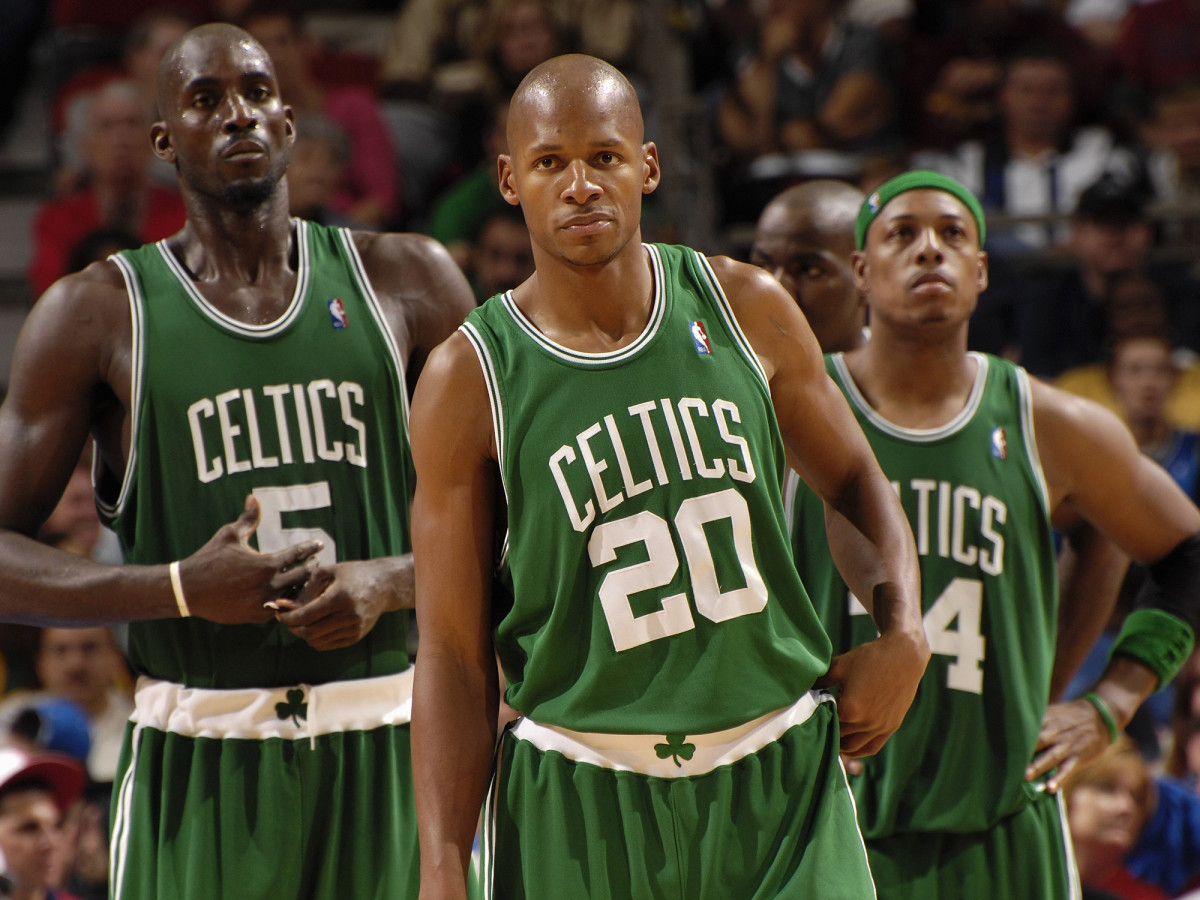
Boston
That lifeline arrived right on schedule, as a young GM named Sam Presti traded Allen to Boston in a move aimed at rebuilding around a No. 2 overall pick named Kevin Durant. The Celtics, meanwhile, were constructing a super team with Paul Pierce, Kevin Garnett, Allen and a young point guard named Rajon Rondo.
Hopes, needless to say, were raised immediately, as Ken Tremendous wrote that a video game version of the new Celtics “enjoyed excellent digital chemistry” and that he expected the real-life version to go “82-0. End of discussion.”
SI Vault: How the Celtics landed Kevin Garnett and became relevant again
Instead, the 2008 Celtics won “only” 66 games, but they did manage to claim the organization’s first championship since 1986. Ian Thomsen wrote that Allen’s growth was on display during the title run.
Throughout the Celtics' rise from second-worst team in the league to NBA finalist, the biggest revelation has been that old dogs really can learn to slide their feet, fight through screens and close out on shooters. "I was laughing the other night—I've never seen Ray Allen play so much defense in his life," says Trail Blazers coach Nate McMillan, who coached Allen for 2 1/2 years with the Sonics.
After the title, Allen was mesmerized by the team’s spot alongside “the ghosts of Celtics past.” Meanwhile, Chris Ballard was using Allen as a teaching tool for his young daughter who was becoming interested in the game.
I could tell her how Ray Allen squares up on his jump shot so perfectly that, were he on sand, he would spring up and, upon returning to earth, land precisely in his footprints.
The Celtics’ Superteam era wound up being a single super season followed by numerous close calls, most notably a 2010 loss to Bryant’s Lakers in a rematch of the 2008 Finals.
Pierce, 32, Garnett, 34, and Ray Allen, 34, were forced to acknowledge they were no longer the singular superstars they'd been as recently as two years ago. "That's the thing I love about this run, and it's probably why people didn't think we could do it," said Rivers on the eve of Game 5. "Going into [the playoffs] we all knew—at least our staff knew—that our guys were not going to be great every night. They accept that now, where maybe in the middle of the year no one accepted it."
Tony Allen: Clocking In With The Grindfather
Although those Celtics fell short, Allen re-signed in the summer and, in an Oct. 2010 story by Ian Thomsen, proved he still had plenty of gas left in the tank.
The two high school players were thrashing, trying to keep up with the old-timer on the elliptical machine next to them. "We're going to beat you," wheezed one teen at a Hartford health club last summer. "You won't," boomed the man, sounding like a Marine gunnery sergeant on Parris Island. "Because I'm the best in shape of anyone you'll ever find doing this." After putting them through 30 increasingly dizzying minutes, Celtics shooting guard Ray Allen invited his new acquaintances to follow him to the treadmills. He had already taken one of the curious kids through his workout of bench presses, curls, shoulder lifts and push-ups—it happened to be an upper-body day for Allen—with little or no rest in between each set. Now the teenager's teammate had asked if they could join in for an hour of brutal cardio training, culminating in a half hour of sprinting in which Allen hiked up the speed in 30-second increments.
The Hartford Public High players were doubled over when Allen stepped off the treadmill. "I told them, 'How does that feel that I'm 20 years older than both of you guys and you can't keep up with me?'" recalls Allen. "I was giving them crap, but I wanted them to know if you guys want to be great you need to be in great condition. I said, 'I'm 35 years old—how am I beating you guys?'"
Later, in that same piece, Allen took stock of the Heat’s new “Big 3” of LeBron James, Dwyane Wade and Chris Bosh.
Allen even insists they're too focused on self-improvement to be distracted by the suddenly glamorous Heat, whose Big Three is younger and more explosive than Boston's. "If you put it in Star Wars terms, the dark side is always there," says Allen, noting that his team fended off challenges from the younger Cavaliers and Magic last year. "The force is strong with us, and those are the challenges you look forward to."
By 2012, the writing was on the wall for the Celtics, who lost a hard-fought and memorable Eastern Conference finals to the Heat in seven games. Allen was dealing with ankle problems, James was tightening his grip on the NBA, and Boston’s window was closing for good.
This Big Three era in Boston is supposed to be ending five seasons after it was conceived and executed with the trades that surrounded Pierce with Allen and then Garnett. With the expiring contracts of Garnett and Allen creating gobs of cap space with which the Celtics may rebuild around Rondo, Boston fans have been both anticipating the future and dreading saying goodbye.
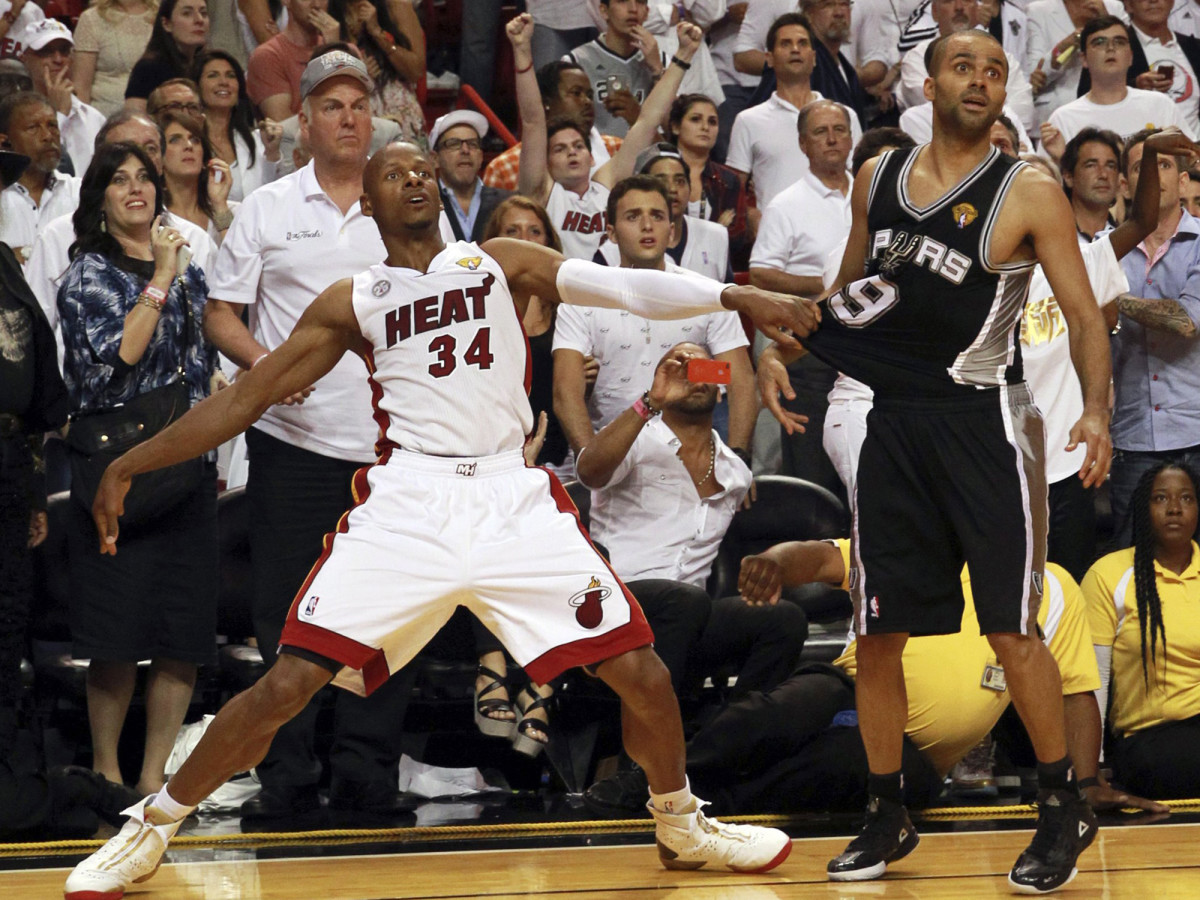
Miami
Boston’s “Big 3” might have been done, but Allen had a plan for what would come next: joining up with the “Dark Side” and settling into a smaller role with the world champion Heat.
The fit was seamless. In a 2013 piece by Chris Ballard, Shane Battier explains the impact Allen’s marksmanship had on Miami’s extraordinary offense.
As Battier, a 43.0% three-point shooter this season, explains, it's Allen's reputation that is so important. "That's probably his biggest strength," Battier says. "Defenders cheat a little more, because it's Ray Allen sitting out there. Those two feet that the defense might cheat, and try to close out to Ray, is the difference between LeBron and D Wade getting to the rack or not." (Indeed, even among Spacers there is a hierarchy; some teams use a rating system of green, yellow and red for deciding whether to leave them or not.)
On this night the Bucks don't cheat enough, and Allen knocks down a pair of threes, then three more. Midway through the second half, in what turns into an easy 104--91 Heat win, he breaks Reggie Miller's playoff record for career three-pointers, and he goes on to finish 5 of 8 from behind the arc. In his postgame press conference, he gives a shout-out to his peers. "I look down the bench and I see Rashard Lewis ... Mike Miller ... James Jones," says Allen. "We've all made sacrifices."
Allen’s reliable stroke famously proved to be the Heat’s saving grace in Game 6 of the 2013 Finals against the Spurs. Down 3-2 in the series and trailing by three points late in regulation, Allen drilled a three-pointer from the right corner that forced overtime and tilted the balance of the series.
Anatomy Of A Miracle: Ray Allen's shot in Game 6
Arena security had encircled the court with yellow rope, anticipating a San Antonio celebration. Heat guard Ray Allen hollered, "Get those motherf------ ropes out of here" after his corner three forced overtime and eventually Game 7. "An organ transplant," declared Battier, the Heat's poet laureate, and a heart-stopper for the Spurs. "Without that," James says, "I'm boarded up in my house right now growing my beard and listening to old music."
That corner three was so spectacular and so memorable that Lee Jenkins broke it down frame by frame in a story entitled, “Anatomy of a Miracle.”
The best shots remain airborne forever, in driveways and alleys, at parks and YMCAs, amateur imitations of Magic Johnson's junior skyhook over the Celtics, Reggie Miller's turnaround against the Knicks, Michael Jordan's step-back versus the Jazz. They live in dusty old gyms like the one at Santa Monica High, where on a warm November morning, a 64-year-old former professor and Air Force intelligence officer strides across the key to the right corner. He glances down at the strip of hardwood separating the three-point line from the sideline and marvels at how narrow it is. Someone shooting from that corner would have only three feet to leap and land—not much room for a man who is, say, 6'5" and wears size-15 sneakers. It's like asking a giant to do gymnastics on a wire. "This son of a gun sprints all the way back here, turns his body, gets his balance, takes his time and sets up perfectly," the professor says. "He can't rush it. He has to follow through. And he does it all because he's done it a million times before. He's waited his whole life for this shot." Then Gregg Popovich pantomimes the stroke that broke his heart.
Allen’s shot came so late in the game, at such an improbable time, that some Heat fans had already left the building.
"I was angry at the fans who left," Allen says. "This is it. This is Game 6. We don't win and it's summer." He saw the ropes, encircling the floor, as a metaphor for his rage. "When you get to the end of your rope," Allen says, "tie a knot."
As it turns out, the step back nature of Allen’s jumper was not spontaneous, but practiced.
As a young player in Milwaukee, Allen invented a drill in which he lies in the key, springs to his feet and backpedals to the corner. A coach throws him a pass. He has to catch and shoot without stepping on the three-point line or the sideline. In Allen's first training session with the Heat, just after Labor Day 2012, he performed the drill. "It was the first time I ever saw anybody do that," Spoelstra says. "He told me he does it for offensive rebounding purposes. He said, 'You never know when you'll be in a situation where you have to find the three-point line without looking down.' "
Ultimately, Allen’s biggest moment – the championship-saving shot – will stand as the capstone of a career built on painstaking repetition and smooth execution. That combination, delivered at precisely the right moment, is what will bond him to fans of the game forever.
"I've been overwhelmed by people who saw that shot," Allen says. "Famous people, regular people, everywhere I go it's all anyone wants to talks about. But it's never really about my making the shot. It's always about where they were."
